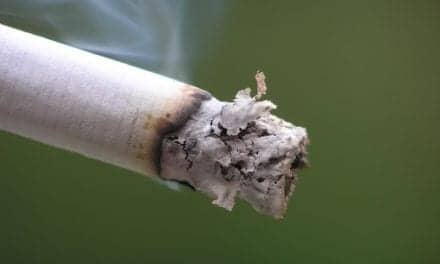
David Lain, PhD, JD, RRT, FCCP
The well-used cliché that it is the people who make the difference between a good environment and a great environment is not too worn out to restate. A hospital department can be tricked out with the latest technology and the fanciest décor and can boast the most efficient and productive department processes and protocols, but, if the staff is not happy, the department is more than likely not operating at its peak. Happy employees—individuals who are both challenged and comfortable in their jobs, people who perform with excellence independently and perform just as well as part of a collaborative team—lead to healthier, happier work environments. And this leads to the best of respiratory care departments.
If you think patients and their families don’t recognize an unfulfilled staff, think again. During respiratory therapy, there is not much for patients to do except observe what is going on around them. And family members tend to be even more cognizant and perceptive of all the activities unfolding in their surroundings. Here’s an example: I was speaking with my elderly neighbor who had recently been at a local hospital waiting patiently with her husband while clinicians treated him for an extreme asthma attack. “One of the staff baked cupcakes for a doctor’s birthday. It was just a little thing, but it felt like all of us patients were invited to the party and were part of their happy little family.” She went on to describe in detail how one technician was teaching a group of others how to use a piece of equipment, and she used the word family again.
So what makes a staff member perform consistently at peak as an individual and be able to step quickly into a critical role as part of a truly life-saving team? I believe it is when a respiratory department “community” exists.
A community develops; it doesn’t happen right out of the box. In a respiratory therapy department, the wide ranges of duties that need to be performed allow individuals to demonstrate their skills and express their interests and talents in certain areas. In the best respiratory therapy departments, individuals are continually offered opportunities to enhance their skills. Additionally, they are provided with pathways for career advancement that allow them to migrate toward their areas of interest.
Then there is the evolution of the respiratory department itself—we’ve gone from oxygen technicians, inhalation therapists, and respiratory therapists, to respiratory care practitioners, transforming the whole respiratory care environment into a community of health care professionals.

In the best respiratory therapy departments, individuals are continually offered opportunities to enhance their skills.
This community extends beyond the hospital. As respiratory clinicians, we are afforded the opportunity to be part of an even larger community through the ever-growing number of respiratory clinician professional organizations. With access to respiratory-specific information about clinical trials, productivity resources, and health economics via Web sites, online learning, newsletters, and annual conferences, we can share our best practices and learn from others, while staying on top of all the new technology and medication available. The respiratory community is expansive and alive with opportunities to learn new ways that we, as clinicians, can continuously deliver the highest quality medical care for our patients.
During my career, I have had the good fortune to, thus far, visit respiratory care departments in 49 states. I always try to make it a point to visit the respiratory department when I am at a hospital, even if I am there to meet with other groups. In fact, I have visited departments totally unrelated to work in any way, simply to stop in and meet other people who share my passion about the profession.
At one hospital in North Carolina, I showed up at the door wearing shorts, t-shirt, baseball cap, and running shoes. All I wanted was to make an appointment to visit the respiratory department. Instead, I was welcomed with great enthusiasm, and, on the spot, the department head gave me a personal tour of the department. It was a tour I will never forget. The patients were well attended, the environment was crisp, and the clinicians were eager to talk to me. What struck me most, though, was that when I stepped into the break room, I heard the staff singing. And they were good! It appeared that while taking a coffee break, someone must have started humming a tune and then the rest of the group chimed in spontaneously. It was a wonderful and memorable experience. Like my elderly neighbor, I, too, experienced that feeling of being part of a happy family.
I am still actually involved with projects at several of the respiratory departments where I have worked. There is one hospital that I have been with essentially my entire career: as a staff therapist 38 years ago to being part of the team running major research projects today. I can personally attest to the sense of family and community structure that exists, and my lifelong friendships developed with some wonderful people remain strong and vibrant today.
At every facility I have visited, one very obvious common denominator rises to the top: the respiratory therapist’s passion for the profession and pride in their department. Each respiratory department is unique and, in its own right, best. I can honestly say that I have never visited a department and thought, “Boy, I sure would never want to work here.” More often, in fact, the thought that comes to mind is “I’d love to work here.”
In my role, I am able to compare and contrast initiatives and programs that I believe enhance a respiratory department. I have noted comparatively, for example, that some departments offer strong internal team building programs; others have a highly focused desire to research and publish. There are departments that provide many resources for patient education, which can give clinicians more tools to help manage patients and their families more efficiently and effectively. Some departments proactively seek out in-service and technology update lunch-and-learns with medical device, equipment, and pharmaceutical representatives. Still others have a formal structure to expose staff to continuing education programs.
While there is that common denominator of passion and pride among all the departments I have seen, the best of’ respiratory care departments, or what I would refer to as the happiest of respiratory care departments, combine career enhancement and advancement opportunities with broader initiatives, resources, and programs that evoke collaboration and help turn a respiratory department into a community.
David Lain, PhD, JD, RRT, FCCP, is vice president and chief clinical officer, Oridion Capnography Inc, Needham, Mass. For further information, contact [email protected].










